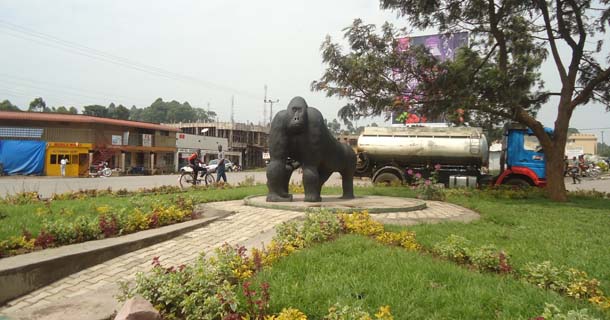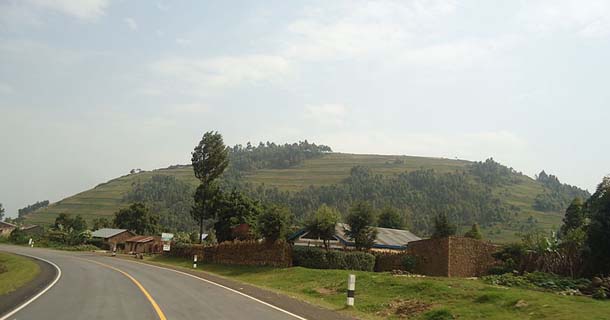About Kisoro town
Kisoro touristic Ambiance moments
 The amorphous and scruffy town of kisoro, situated at the base of the Virunga Mountains, appears to have grown significantly in recent years, presumably as a result of its proximity to the boarders with Rwanda and the DRC and sporadic influxes of refugees from both of these countries.
The amorphous and scruffy town of kisoro, situated at the base of the Virunga Mountains, appears to have grown significantly in recent years, presumably as a result of its proximity to the boarders with Rwanda and the DRC and sporadic influxes of refugees from both of these countries.
As with so many towns in Uganda, kisoro is a pleasant enough place with good facilities, but it is of little inherent interest to travellers. Should you be passing through at the right time of week, the enormous Monday and Thursday market along the Kabale is emphatically worth a look. Whenever you visit kisoro, you’re also bound to be approached about whether you want to visit the local pygmy community, which has been evicted from the forest to be squatted in what amounts to a customised refugee camp.
The answer to this query should be no, unless your motivations are charitable or journalistic concrete suburbia is no place to gain an even faintly accurate impression of the rich culture of Uganda’s oldest extant ethnic group. What kisoro lacks in intrinsic appeal is made up for by an utterly stupendous setting, with the tall volcanic peaks of the Virungas towering above the southern skyline and green hills rolling out of town in every direction.
The town is also an important travel hub, passed through by all travellers who intend to visit Mgahinga National park, and a popular springs board for cross boarder gorilla tracking excursions in Rwanda’s Parc National Des Volcans in the currently closed Congolese gorilla sanctuary at Djomba and even if you have no intention of tracking gorillas, the undulating countryside around is situated with lakes, caves and craters that make idea goals for off the beaten track day walks.
Although plenty of accommodation is to be found in kisoro, many travellers prefer to stay in areas that are nearby, strategic and far more scenic and tranquil location. Since gorilla tracking and other excursions within the park depart early, it helps remove a lot of hassle.
Getting there and away.
 Kisoro lies little more than 30km west of Kabale as the crown flies, but the distance by road is more than 80km, thanks to the geographical obstacles such as Lake Bunyonyi, the unsurfaced road between Kigezi’s two principle towns generally in good condition except after rain is one of the most scenic in the country.
Kisoro lies little more than 30km west of Kabale as the crown flies, but the distance by road is more than 80km, thanks to the geographical obstacles such as Lake Bunyonyi, the unsurfaced road between Kigezi’s two principle towns generally in good condition except after rain is one of the most scenic in the country.
Visual highlights include the view across the valleys to the Virungas offered from the Kanaba Gap North of Lake Bunyonyi and the section of the road that passes through the bamboo and montane forest of the Echuya forest Reserve. The trip should take you around two hours from Kabale town.
When you choose to travel by your own on either public and private arranged transport or by a safari company, still getting there by road will remain the same, after a long five hour drive from Kampala or a two hours in-case you are coming from Rwanda’s Capital Kigali to Kabale town. To kisoro will be another two hours scenic all round journey, after a roughly 20km from town, turn off to Bwindi’s Buhoma entrance signpost to your right and after another 5km or so the turn off to the Ruhija entrance.
Roughly 40km past Kabale, the road skirts the Northern tip of the lake Bunyonyi and then crosses the Ndego River, shortly before reaching Muko trading centre. Note that an alternative and more scenic route branching north from the five way junction on the summit above Rutinda on Lake Bunyonyi, can be used between Kakale and Muko.
It’s easy to branch on to a road arching northwards past the southern tip of the Bwindi Forest Reserve and a village called Mushungero. This road is about twice as long as the standard route and treacherous in wet weather. On the other hand it’s very scenic and offers great views over Lake Mutanda and Mulehe, would make an interesting diversion in dry conditions. Several busses and min-buses travel daily to kisoro from Kampala but very tire some and sometimes annoying.